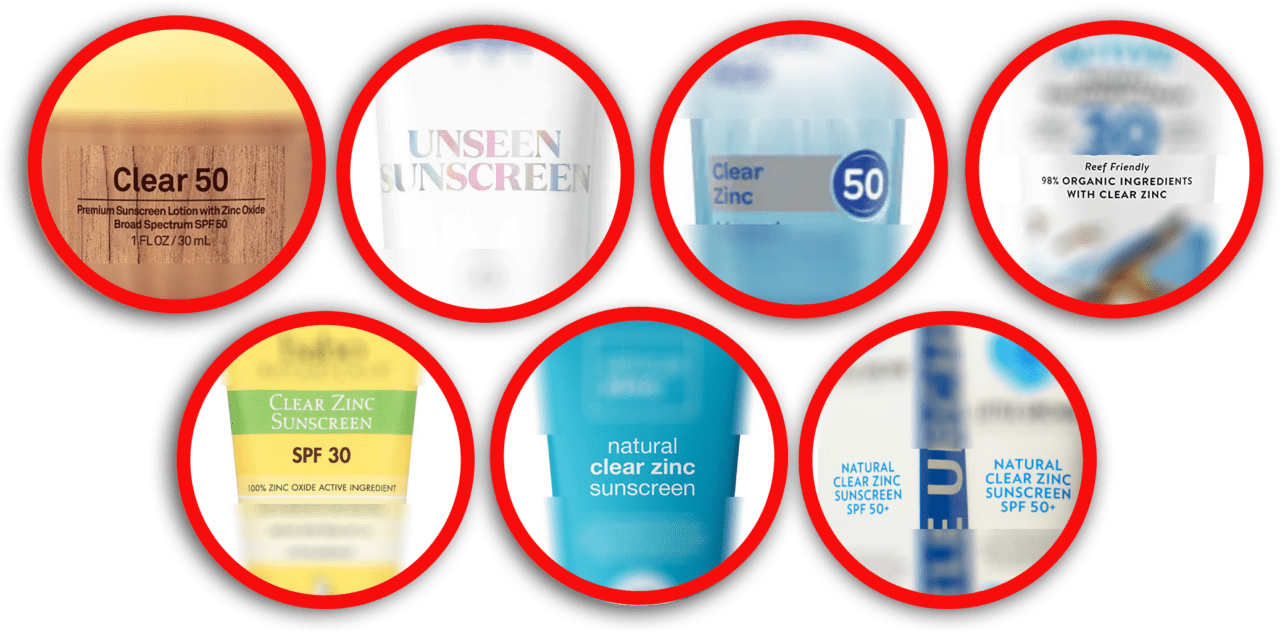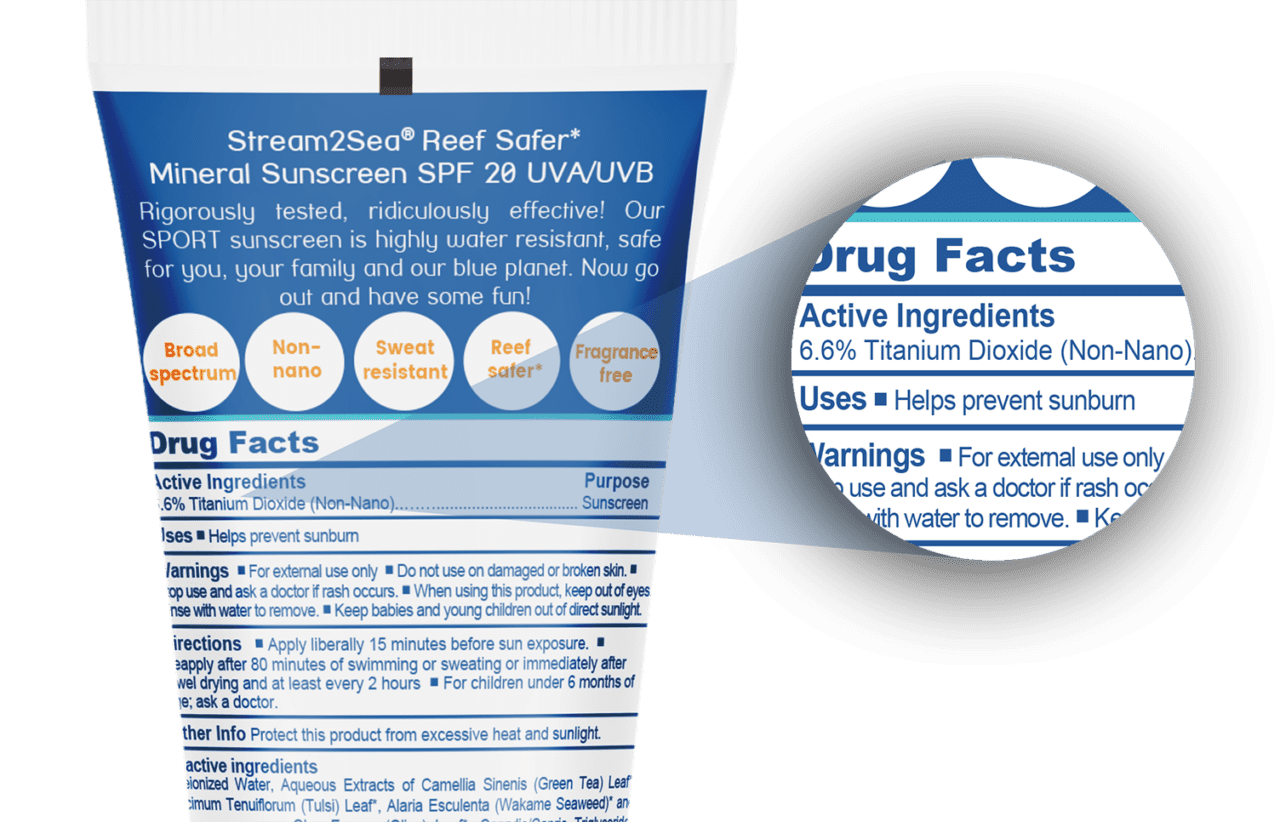Environmentally conscious consumers are seeking out mineral sunscreens – and are learning they cannot just trust what is on the front of a label. What we now need you to know is that not all mineral sunscreens are created equally. Just because a sunscreen says it contains zinc oxide or titanium dioxide does not mean that it will be safe for the environment.

Consumers want sunscreens that contain minerals, but they also want something that will be aesthetically pleasing and easy to apply. Manufacturers have figured out that they can reduce the size of the minerals to nano-particles so they’re less whitening. They can even ‘smush’ the nano-particles together into larger agglomerates of nano-particles, then say they are non-nano.
Many will debate if nano-particles are safe for humans, but there is no doubt that nano minerals are toxic in aquatic ecosystems. While titanium dioxide and zinc oxide are both natural minerals, nano-particles are manufactured to be tiny – about one millionth of a millimeter or 100,000 times smaller than a human hair – and they behave differently in the environment. In a sunscreen, they’re easier to apply and you’ll often see labels like “Clear Mineral Coverage.”
Their widespread use, however, is raising alarm among some scientists. An estimated 550 to 10,000 tons of nano zinc are manufactured annually because of their extensive use in sunscreens and other products like solar cells, textiles and electronics. Although regulations prevent them from being dumped in aquatic ecosystems, they are released when sunscreens that contain them are washed off swimmers or discharged from wastewater treatment facilities. Nano-zinc, in particular, is considered “extremely toxic” to aquatic creatures, with a lethal concentration comparable to the banned pesticides dieldrin and heptachlor in some of the animals tested.
It’s more difficult to identify potential risks to humans, but at least one study published in the International Journal of Nanomedicine notes that the toxic effects of nano-zinc (which are widely detected in living environments and drinking water) are linked to increased inflammation, oxidative stress and cytotoxicity. Other studies show that that some of the shapes of nano-zinc may cause neurotoxicity due to their ability to access the brain.

Nano-titanium may be safer, but the International Agency for Research on Cancer has still identified it as a possible hazard for humans. An article published in Radiation Oncology concludes that “until relevant toxicological and human exposure data that would enable reliable risk assessment are obtained, nano-titanium should be used with great care.”
A separate study in Environmental Resources indicates that nano-titanium inhibits the growth of four important beneficial gut bacteria, resulting in changes in metabolism in mice.
At Stream2Sea, we not only avoid all nano minerals, we independently verify that our raw materials only contain non-nano minerals, for human safety and for our blue planet. We also don’t play games by using ingredients like ‘clear zinc’ that show up as agglomerated nano particles when you look closely.
